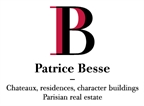A 15th and 16th-century manor house, listed as a Historical Monument, its outbuildings and 12-hectare grounds in the Mayenne department - ref 391536
A 15th and 16th-century manor house, listed as a Historical Monument, its outbuildings and 12-hectare grounds in the Mayenne department.
Located in the Pays de la Loire region and within the Mayenne department, the property is near the Sarthois town of Sillé-le-Guillaume, whereas Le Mans with its high-speed rail station, Alençon and Laval with its airport are 50, 30 and 60 kilometres away, respectively. In addition, the manor house is located between two small nearby villages providing the closest essential necessities (bakery, grocery store), while approximately a dozen kilometres away, Sillé-le-Guillaume has all the basic shops and services for daily life as well as a train station with 20-minute connections to Le Mans several times a day. Lastly, the motorway is only thirty minutes away and makes it possible to reach the capital by car in 2.5 hours.
From the village, a small road leads to a private driveway up to the entrance porch, which opens onto a main courtyard. The driveway also extends behind the manor and provides access to two outbuildings located to the west. A third outbuilding encloses the courtyard to the east, near the entrance. Pastures spread out on either side of the driveway. One of them is continued to the north with the first part of an oak grove, which then unfolds towards the west. The manor's courtyard is extended by a garden, which overlooks a small river. Two other pastures located on the other side are accessible via a bridge.
Constructed partially over a basement level, the manor contains four floors, including two built into the roof space. Made out of stone and rubble and coated in plaster, its edifice is crowned with gabled slate roofs and stone rims, punctuated by dormer windows topped with sculpted ornaments. Stone mullioned windows cadence the façade and a double flight staircase leads to the front door.
In the back, the body of the main building is flanked by a square tower with a tented roof, a staircase tower and a round tower with a pointed roof. To the east, a small two-storey, hipped slate roof building is attached to the square tower. A cellar, accessible from the outside, is located under a portion of the manor. Its walls are made out of small sandstone masonry, which could date to the 11th and 12th centuries. The manor's façades and roof, as well as its eastern two-storey wing, are listed as historical monuments.
The Manor
The ground floor
The front door opens directly onto a large room used as a living room-dining room, which is also accessible via a second entrance located in the staircase tower. The space leads to an office, a kitchen located in the square tower and a hallway, with lavatory, which provides access to the round tower. Its lower floor was converted into a bathroom and sauna, with a fireplace and vaulted ceiling. The kitchen communicates with an adjacent room used as a utility and boiler room. Monumental granite fireplaces are fastened to the walls of the kitchen and living room. Most of the windows have granite surrounds and all the manor's doors are wood panelled with ancient metal hinges, while some are topped with stone ogees. The upper portions of the windows contain stained glass. All the floors, except in the office, are covered in terracotta tiles and the ceilings have exposed beams.
The first floor
A stone spiral staircase leads to an initial bedroom and a shower room located in the round tower with a fireplace and separate lavatory. Continuing on, there is another living room, which leads to a second bedroom in the square tower, followed by a corridor with a shower room and a separate lavatory as well as a final bedroom. Monumental fireplaces with painted granite mantles are fastened to the walls of the living room and the two largest bedrooms. One of the dividing walls is also decorated by a beam painted with ...


